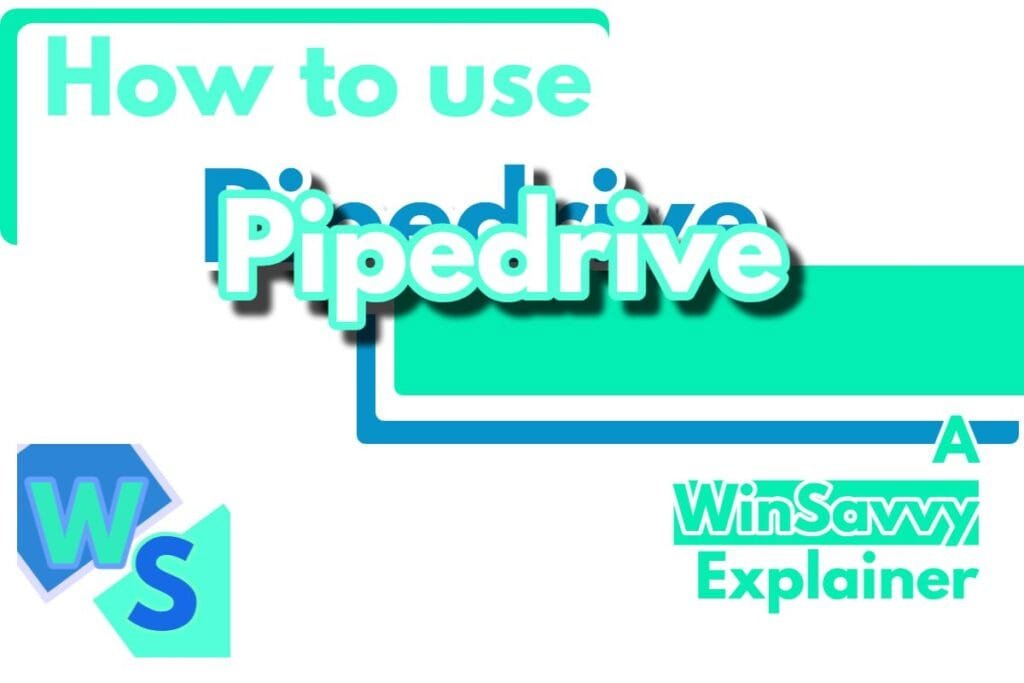Understanding Inbound Marketing
Inbound marketing is all about drawing in customers with content they actually want, compared to those interrupting methods nobody likes. During my deep dive into this, I’ve realized why knowing the perks and comparing them with old-school methods like outbound marketing is a game-changer if you’re serious about doing it right.
Benefits of Inbound Marketing
The perks of inbound marketing really stand out, especially when you stack them against the relics of outbound methods. Here’s my breakdown:
| Benefit | Why It Rocks |
|---|---|
| Cheaper Deals | You don’t need to break the bank as much as with traditional ads, giving you more bang for your buck. |
| Builds Trust | Dishing out useful content builds trust and earns you street cred with your audience. |
| Quality Leads | You get leads that actually care about what you’re offering, not just random folks, upping your conversion game. |
| Relationships That Last | Keeps your customers coming back for more, fostering loyalty and close ties. |
| Brand Visibility | Sharing content regularly keeps you on the radar and boosts your marketplace presence. |
| Smarter Decisions | With analytics, you see what’s working and tweak strategies on the fly. |
| Grows With You | Your marketing can expand without a sky-high budget. |
| Happy Customers | Addressing what customers need through content keeps them satisfied. |
Companies hopping on the inbound train have seen a mind-blowing 126% jump in lead generation compared to those snoozing on this trend (Constant Contact Blog). The above just scratches the surface of why inbound marketing is stealing the spotlight today (Leadfeeder).
Inbound vs. Outbound Marketing
Getting a handle on how inbound kicks outbound’s butt is key to nailing your strategy.
| Aspect | Inbound Marketing | Outbound Marketing |
|---|---|---|
| Style | Pulling in customers with stuff they value | Pushing info to uninterested masses |
| Goal | Nurturing relationships and gaining trust | Blasting messages perceived as annoying |
| Price Tag | Lower, focusing on growing naturally | Costs extra due to heavy ads/promos |
| Lead Quality | Entices keen leads, nudging them to convert better | Turns up iffy leads that aren’t keen |
| Tracking | Based on real numbers for constant improvement | Harder to peg its success, often shooting in the dark with ROI |
Swapping outbound for inbound means setting up a solid website as your content hub, drawing in traffic naturally through search engines, socials, and blogs (HubSpot Blog). Shifting gears like this blends your marketing with how folks buy stuff today, ensuring you snag an interested audience in the long run.
For anyone ready to jump into this, getting your head around inbound’s perks and how it outshines traditional outbound methods is key to going places.
Key Inbound Marketing Tactics
Pulling people in like a magnet—that’s inbound marketing for you. I’m diving into the magic trio: blogging, mixing up content, and sprucing up with SEO. It’s all about laying down the welcome mat for folks to find and trust what I’m offering.
Blogging for Success
Blogging is my bread and butter in the world of inbound marketing. Folks who focus on blogging are 13 times likelier to see those dollar signs show up as profit. And when a business churns out at least 16 blog posts a month, the traffic surges 3.5 times, while leads skyrocket 4.5 times over those who rarely update their blogs (WordStream).
Keeping my blog fresh not only hooks that sweet organic traffic but also lets me play teacher and expert. By dishing out conversations people care about, I can bond with my audience and be seen as their go-to guru.
| Blogging Frequency | Website Traffic Increase | Leads Generated Increase |
|---|---|---|
| Less than 4 times/month | Baseline | Baseline |
| 4-15 times/month | 2x | 2x |
| 16+ times/month | 3.5x | 4.5x |
Content Variety Strategy
Blogging is great and all, but I gotta spice things up with different content forms. Think blogs, infographics, whitepapers, ebooks, case studies, webinars, podcasts, and videos (WordStream). This way, I’m keeping up with different tastes and learning styles.
Different strokes for different folks—each type serves its unique purpose. Infographics make the tricky stuff easy-peasy, while webinars offer a chance to chat live. Mixing these elements ups my chances of catching more eyes and holding their interest.
Importance of SEO
SEO is my secret sauce for being noticed on search engines. On the page, it’s about crafting thorough, user-friendly content that answers questions peeps are asking. Off the page, it’s working to gain backlinks from big-name sites to my stuff (WordStream).
A slick SEO plan isn’t just about squeezing in those keywords; it’s also about making sure the user experience is top-notch. Fast and mobile-friendly sites keep people hanging around. This magical combo of killer content and tech-savvy tweaks gets visitors to stay and, fingers crossed, become fans.
To get more juice out of my marketing move, I need to explore more inbound marketing tactics and see what fits my groove.
Using Webinars in Inbound Marketing
Webinars have honestly become like that secret weapon you’ve been looking for in inbound marketing. By serving up some tasty, valuable info straight to the people, I can really get chatting with folks, building that familiar vibe while showing off my brand. Let’s chat a bit about how webinars can drum up some top-notch leads for my business.
Why Webinars Matter
Webinars are like this stage where the content team steps up to deliver the goods in a super engaging way. It’s like having a conversation right there with potential customers—it’s way more human than old-school marketing. According to WordStream, this face-to-face-ish interaction builds a tighter connection between my brand and the people checking us out.
But hey, the perks of webinars don’t stop at just keeping people engaged; they’re also boosting how my brand looks in the world. By dishing out free, useful stuff, I get to show off my know-how, putting my brand out there as the real deal in the industry. This objective of providing top-notch info that speaks directly to my dream clients is why inbound marketing is such a hit (Leadfeeder).
And let’s just talk about how cool it is that webinars let folks learn at their own speed. This freedom can turn casual viewers into loyal fans (Leadfeeder).
Grabbing Leads with Webinars
Webinars are like a dream team for snagging leads, pulling in folks who are genuinely curious about what I’m offering. When people sign up for a webinar, they usually spill the beans with their names and email addresses. With this info, I can keep the conversation going and guide these leads right through the sales path. The leads I get from webinars are typically more interested, making them more likely to take the bait (Leadfeeder).
Plus, webinars help me grow my email list while giving my audience a closer look at what I’ve got going on, answering questions on the spot. This real-time chat shows that I’m here and ready to respond, building a trustworthy relationship.
Here’s a snapshot of how webinars boost lead gathering:
| What’s the Deal | The Lowdown |
|---|---|
| Getting Chatty | Talk straight with potential customers |
| Scooping Info | Get emails for nurturing those leads |
| School’s in Session | Teach ’em and earn trust |
| Ready to Convert | Quality leads make for better conversions |
Teaming up webinars with my inbound marketing game lets me bond with my crowd and scoop up leads that matter to my business. Check out our spot on inbound marketing strategies for more nifty tactics.
Building Trust with Inbound Marketing
Building trust ain’t just a buzzword; it’s essential in inbound marketing. When I connect with folks through useful content and genuine interactions, I’m laying down the foundation of trust and dependability that can make my brand shine.
Establishing Credibility
With inbound marketing, I get to cozy up to the folks who are genuinely interested in what I’m selling. By sharing my knowledge and offering insights that hit home for them, I’m not just another face in the crowd. Businesses with longer decision-making roads see real value in this game plan, helping potential buyers sniff out the info they need. Those folks popping over to my blog or scrolling through my social media are hungry for knowledge, and I’m more than happy to serve it up.
By constantly rolling out top-notch content, I can boost how people see my brand. Compared to those loud and all-up-in-your-face strategies, inbound is like a cool breeze. It lets my audience call the shots when it comes to buying, which builds deeper connections and ups my brand’s street cred.
Long-Term Relationship Benefits
Inbound marketing’s focus on sharing wisdom helps me keep the conversation going with my customers. I dish out valuable stuff regularly, which helps me stand tall as an industry authority. This means customers lean on me, boosting loyalty and bringing them back for more. Inbound marketing creates a space where folks feel appreciated and in the loop, slashing those goodbyes and upping the lifetime camaraderie.
Plus, the connections I make through inbound generally cost less than those old-school ads. This penny-pinching approach lets me get more bang for my buck, and I can spread my resources wisely.
The perks of earning trust with inbound marketing go further than quick sales, setting the stage for ongoing vibes and fan love for the brand. By staying in touch with clients and keeping it real, I can cash in on a loyal crowd that fuels the growth of my biz. Want to see real-life wins with inbound marketing? Peek at our inbound marketing examples.
Transitioning to Inbound Marketing
Switching over to inbound marketing isn’t just something I want to do; it’s a must. I need my website to be a magnet for organic visitors. Think of it as setting up shop on a busy street corner, where folks naturally wander in from search engines, blogs, and social media.
Setting Up Your Website Hub
First off, I’ve got to make my website the place to be for my industry’s crowd. That means curating content that’s spot-on for my audience. It helps to have a website that’s as easy on the eyes as it is on the brain, with swift load times and a mobile-friendly design.
| Components | Importance |
|---|---|
| Informative Blog | Pulls in curious folks and builds trust |
| SEO Chops | Gets me noticed on search pages |
| Social Media Ties | Encourages sharing and interaction |
| Clear Paths | Keeps visitors exploring and engaged |
By crafting my site into a content-centric hub, I’m basically rolling out the welcome mat for leads, giving them all the reasons to stick around and eventually become loyal.
Shifting Strategies Successfully
Making the leap from old-school marketing to inbound takes some elbow grease and a knack for numbers. The perks like saving money, snagging better leads, and getting my brand’s name out there make it a no-brainer. Here’s what I’m focusing on:
Amp Up Content: I’m diving into creating all kinds of content—think blogs, flashy graphics, compelling videos, and success stories. It’s all about catching different folks with different tastes.
Dig Into the Data: Using analytics tools, I can peek into my visitors’ habits and see what’s working. It’s like having a crystal ball that helps tweak tactics and figure out what’s driving my efforts (LinkedIn).
Show Some Love to Leads: Creating paths to nurture leads through emails that feel personal, social media banter, and content that speaks directly to them is how I’ll keep the conversation going.
Sharpen the Team Skills: Making sure my crew is clued up on inbound marketing tricks and tools is key. Training is supercharged with courses and shiny certifications that keep everyone on the same page.
By sticking to these steps, I’ll be cruising through the transition to inbound marketing, setting the stage for my business to thrive and grow.
Effective Inbound Marketing Implementation
Implementing a top-notch inbound marketing strategy ain’t just throwing spaghetti at the wall and hoping some of it sticks. Nope, it’s all about carefully planning out your content and nurturing leads. These are the yin and yang of turning curious folks into loyal customers.
Content Creation Strategies
Content is the lifeblood of this whole inbound game. Whether you’re spitting out blogs, crafting catchy social posts, or penning email updates, it’s about making real connections. High-quality stuff isn’t just a nicety – it packs a punch by giving your brand a halo of helpfulness instead of a megaphone of pushiness. Trust me, people love content that’s more “here’s some wisdom” rather than “buy, buy, buy” (HubSpot and Leadfeeder).
Here’s a cheat sheet on content types:
| Content Type | Purpose |
|---|---|
| Blog Articles | School people with juicy insights |
| Social Media Posts | Hang out with the folks and get ’em buzzing |
| Email Newsletters | Keep leads in the loop with cool, customized updates |
| Infographics | Make info pop with eye-catching visuals |
| Videos | Dive deep with how-tos or behind-the-scenes looks |
Mixing it up with this array of formats, I reel in different slices of my audience, making this inbound thing click like a well-oiled machine.
Lead Nurturing Workflows
Bringing in new peeps with killer content? Check. Now, let’s talk about cuddling those leads till they’re ready to commit. That means stitching together slick workflows that keep folks engaged and inch them through the sales path. You gotta automate smartly, segment smarty-pants-style, and serve content that makes ’em go, “Wow, they get me.”
Automation’s the magic wand here, dolling out tailored nuggets when people need ’em most. By using tools that know when and how to deliver the goods, I can roll out the red carpet one step at a time – saving time and feeling like a personalization pro.
Important bits for lead-loving workflows:
| Workflow Element | What’s the Deal? |
|---|---|
| Trigger Events | Spark interactions (got a newsletter sign-up? Act on it) |
| Segmentation | Split up the crowd by what they do or who they are |
| Content Mapping | Pair each big moment with just the right bit o’ content |
| Follow-Up Emails | Ping pong automated follow-ups to keep the fire alive |
Pulling in leads this way is like fishing with dynamite compared to the teaspoon method of yester-years (Constant Contact Blog). By cozying up to these leads, I’m not only building bridges but also paving the way for epic conversions through my inbound smarts.
For a peek into what makes this strategy tick, I keep my eyes peeled for inbound marketing examples and keep those gears turning with inbound marketing courses.
Exploring HubSpot’s Inbound Marketing Solutions
HubSpot stands out as a hot-shot when it comes to inbound marketing software, helping businesses grow by seamlessly blending marketing, sales, and customer service. Let me break down HubSpot’s Customer Platform and its influence on businesses.
HubSpot Customer Platform Overview
HubSpot’s Customer Platform hooks you up with various software options that fit snugly into different functions within your team. Here’s a quick rundown:
| Hub | What’s It For? |
|---|---|
| Marketing Hub | Automate that marketing to reel in and manage leads. |
| Sales Hub | Sales software to crank up sales efficiency. |
| Service Hub | Tools that jazz up customer service interactions. |
This all-in-one platform lets businesses cook up personalized marketing experiences with killer content while mastering lead engagement. The inbound marketing philosophy is all about luring in loyal customers and boosting how you connect with them, a mantra preached by HubSpot.
Impact of HubSpot on Businesses
The payoff from using HubSpot’s tools is nothing short of amazeballs. A year into the HubSpot game, and customers see insane spikes in their marketing and sales stats:
- 129% boost in leads
- 36% more deals sealed
- 37% faster ticket resolutions
These numbers tell you that sticking HubSpot into your game plan amps up both inbound and outbound marketing chops. Plus, HubSpot hooks you up with all the help you need to shift gears into inbound techniques, nudging businesses to turbocharge their content smarts—which is kinda crucial for pulling in the crowd you want.
If you’re itching to get the hang of inbound marketing tools and tricks, hit up resources like inbound marketing courses or peek at inbound marketing statistics. Diving into these goodies can give golden insights into nailing inbound marketing methods tweaked to what your business needs.
Successful Inbound Marketing Examples
When it comes to inbound marketing, some folks have really cracked the code. They’ve figured out how to grab attention and keep people coming back for more, turning leads into friends who stick around. Let me share a few stories of companies that have mastered this art and what I’ve learned from their success.
Strategies from Leading Companies
Loads of businesses have jumped on the inbound marketing train to get noticed and keep the buzz going. Here are some of the cool tricks they’ve pulled off:
| Company | What’s Working for Them |
|---|---|
| HubSpot | They use their own tools to dish out content left and right—think blogs, ebooks, and webinars. It’s like a buffet for anyone hungry for leads. |
| Buffer | Their secret sauce? Juicy blog posts and lively social media chats. It’s all about teaching, not just selling. |
| Airbnb | They’re all about getting hosts to share their digs and stories. It’s like a community of storytellers giving Airbnb a glowing halo. |
| Moz | They’ve gone big on SEO, offering guides and tools that make you wanna trust them. |
| Slack | They’ve got a slick referral gig and handy guides for newbies, making word-of-mouth their best friend. |
These tactics are like the MVPs of inbound marketing, teaching folks while keeping them hooked with content that matters. By giving away the good stuff, businesses reel in people who are genuinely curious about what they offer.
Lessons from Industry Successes
From watching these big names win at inbound marketing, I’ve picked up a few tips:
Serve Up Value: People love learning, so give them content that teaches and guides. Brands that feed brains get love and loyalty in return.
Keep the Updates Coming: Consistent blogs, social media posts, and new resources keep your face in front of your audience and keep them engaged.
Dive into the Data: Keeping an eye on the numbers helps tweak and tailor strategies for success. Tools like inbound marketing analytics are great for seeing what clicks.
Pamper Your Leads: Create a nurturing process that listens to and serves what your leads want, eventually turning them into customers.
Spark a Community: When people rally around your brand and start sharing their stories, it’s like free advertising. Real-life endorsements can work wonders.
The success of these brands shows just how awesome inbound marketing can be. By packing your content with value and building real relationships, you can snag and hold onto your perfect audience. For more advice on leveling up your inbound tactics, check out our in-depth guides on inbound marketing strategies and inbound marketing tools.





















